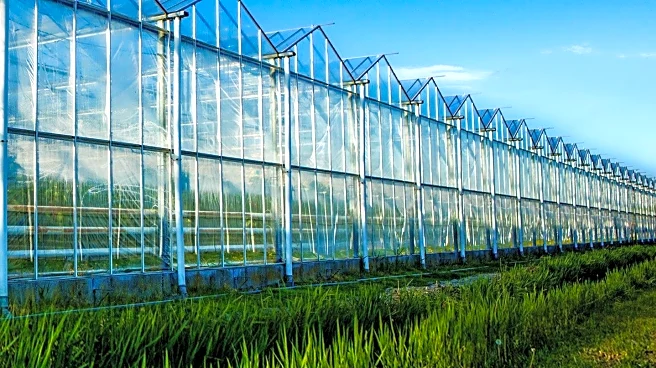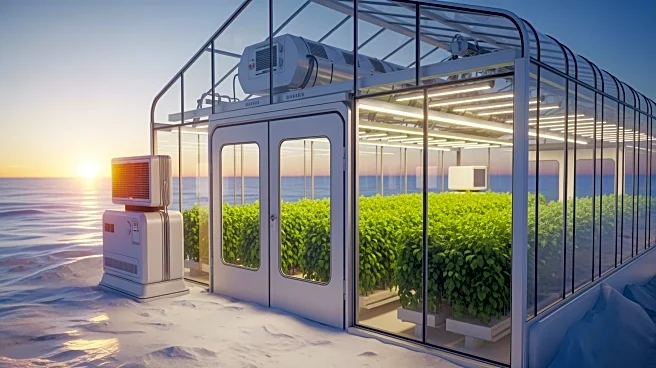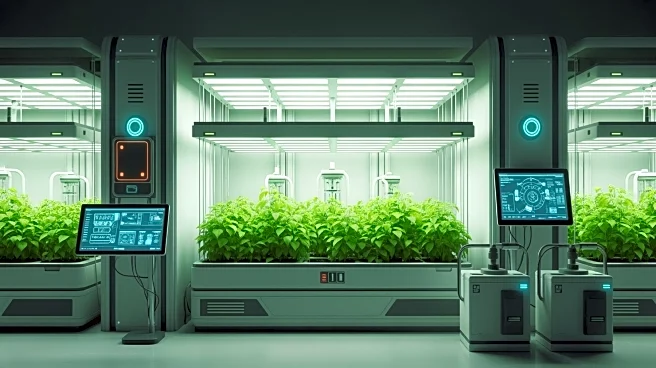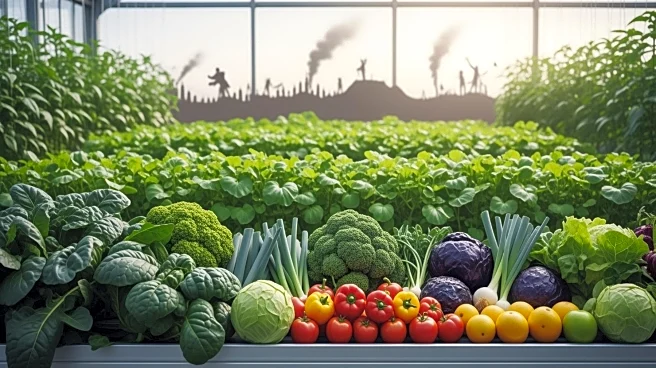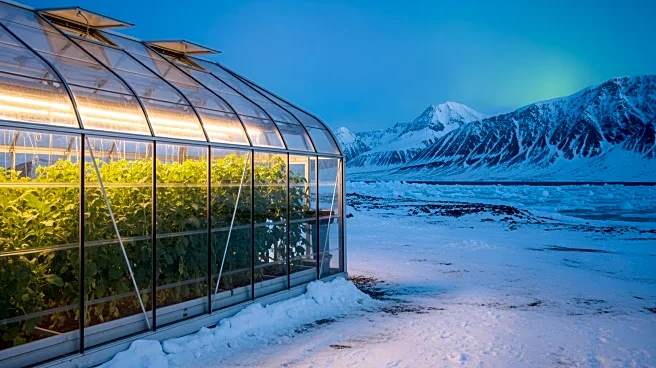What's Happening?
A research initiative in Canada's Arctic is enabling Inuit communities to grow fresh produce year-round using high-tech greenhouses housed in insulated shipping containers. This project addresses food insecurity in regions where traditional diets rely
heavily on raw meat and fish due to the absence of fruits and vegetables. The greenhouses utilize artificial lighting and renewable energy sources, such as wind turbines and solar panels, to sustain plant growth. The initiative, partially funded by the Canadian Space Agency, aims to increase local access to fresh produce and improve nutritional options for Inuit communities.
Why It's Important?
This project is crucial for addressing food insecurity in remote Arctic communities, where high costs and limited availability of fresh produce pose significant challenges. By providing a sustainable method for growing fruits and vegetables locally, the initiative enhances food sovereignty and reduces reliance on expensive imports. The use of renewable energy sources also aligns with broader environmental goals, promoting sustainable practices in food production. If successful, this model could be replicated in other remote regions, offering a scalable solution to global food security issues.
What's Next?
The project aims to expand its capacity over the next three years, increasing the volume of produce grown and potentially achieving economic sustainability. Future plans include processing and exporting local products, such as Arctic char, to further support the community's economy. As the initiative progresses, it may attract additional funding and partnerships, fostering innovation in sustainable agriculture. The success of this project could inspire similar efforts in other regions facing food insecurity, contributing to global advancements in agricultural technology.
